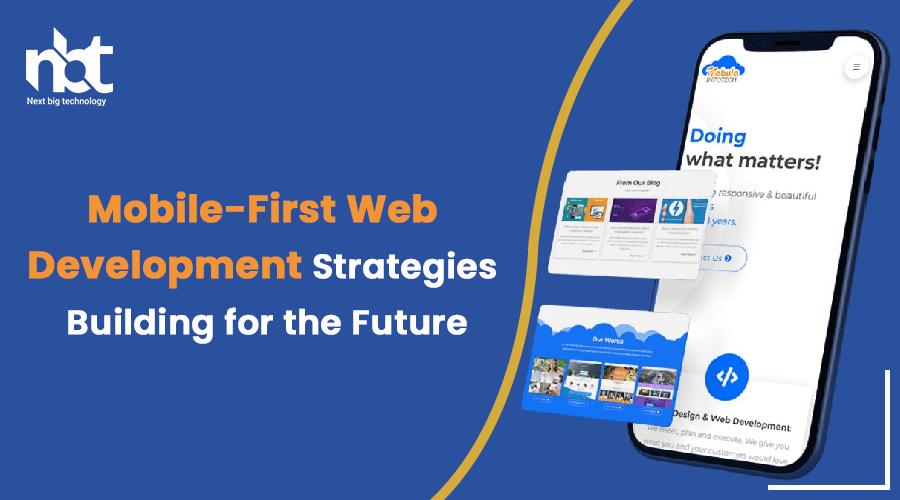Table of Contents
Introduction
Mobile-first web development is a strategic approach that prioritizes designing and optimizing websites for mobile devices before considering desktops. This paradigm shift is fueled by the fact that mobile users now outnumber desktop users, making it crucial for businesses to embrace a mobile-first mindset.
Understanding Mobile-First Approach

A mobile-first approach involves creating a responsive and user-friendly website layout for mobile devices first, and then scaling up for larger screens. This approach ensures that the website functions seamlessly on smaller screens, offering a superior user experience.
Why Mobile-First Matters
The prevalence of mobile devices has led to a significant shift in user behaviour. People use their smartphones for everything from shopping and socializing to research and entertainment. Therefore, a mobile-friendly website is essential for attracting and retaining users.
Responsive Design vs. Mobile-First Design

While responsive design adapts websites to different screen sizes, mobile-first design starts with mobile screens and then adapts to larger ones. Mobile-first design is more future-proof as it caters to the growing mobile user base.
Benefits of Mobile-First Web Development
Enhanced User Experience
Faster Loading Times
Improved SEO Rankings
Increased Conversion Rates
Key Principles of Mobile-First Design

Content Prioritization
Prioritize essential content and features for mobile users to ensure a streamlined experience.
Progressive Enhancement
Build a strong foundation for mobile users and progressively enhance the website for larger screens and more advanced features.
Performance Optimization
Optimize website performance by minimizing heavy elements and improving loading times for mobile devices.
Challenges in Mobile-First Development
Compatibility Across Devices
Ensuring your mobile-first design works flawlessly across a variety of devices and screen sizes can be challenging.
Navigation and User Experience
Designing intuitive navigation and providing an excellent user experience on mobile devices requires careful consideration.
Performance Bottlenecks
Avoiding performance bottlenecks, especially on slower mobile networks, is crucial for retaining users.
Tools and Frameworks for Mobile-First Development

Several tools and frameworks, such as Bootstrap and Foundation, can simplify the mobile-first development process.
Testing and Debugging Mobile-First Websites
Thoroughly test your website on various mobile devices and browsers to identify and fix any issues that may arise.
SEO Considerations for Mobile-First Websites
Mobile-first indexing by search engines means that having a mobile-friendly website is critical for SEO success.
User-Centric Mobile Design
Designing with the user in mind is key to creating mobile-first websites that resonate with your target audience.
Examples of Successful Mobile-First Websites
Explore real-world examples of businesses that have reaped the benefits of mobile-first design.
Future Trends in Mobile-First Development

Stay ahead of the curve by discovering emerging trends and technologies in mobile-first web development.
Conclusion
Mobile-first web development is no longer an option but a necessity. Embracing this strategy ensures that your website remains competitive and relevant in a mobile-centric world.
FAQs
Q1: What is the difference between mobile-first design and responsive design?
Responsive design adapts websites to different screen sizes, while mobile-first design starts with mobile screens and then scales up.
Q2: How does mobile-first web development affect SEO?
Mobile-first indexing by search engines means that having a mobile-friendly website is crucial for SEO success.
Q3: What are the key challenges in mobile-first development?
Challenges include compatibility across devices, navigation and user experience, and avoiding performance bottlenecks.
Q4: Can you provide examples of successful mobile-first websites?
Yes, there are numerous successful mobile-first websites, including Airbnb and Starbucks.
Q5: What are the future trends in mobile-first development?
Future trends include using AI for personalization, enhanced mobile app integration, and improved mobile e-commerce experiences.
Thanks for reading our post “Mobile-First Web Development Strategies: Building for the Future ”. Please connect with us to know more about Mobile-First Web Development Strategies.










